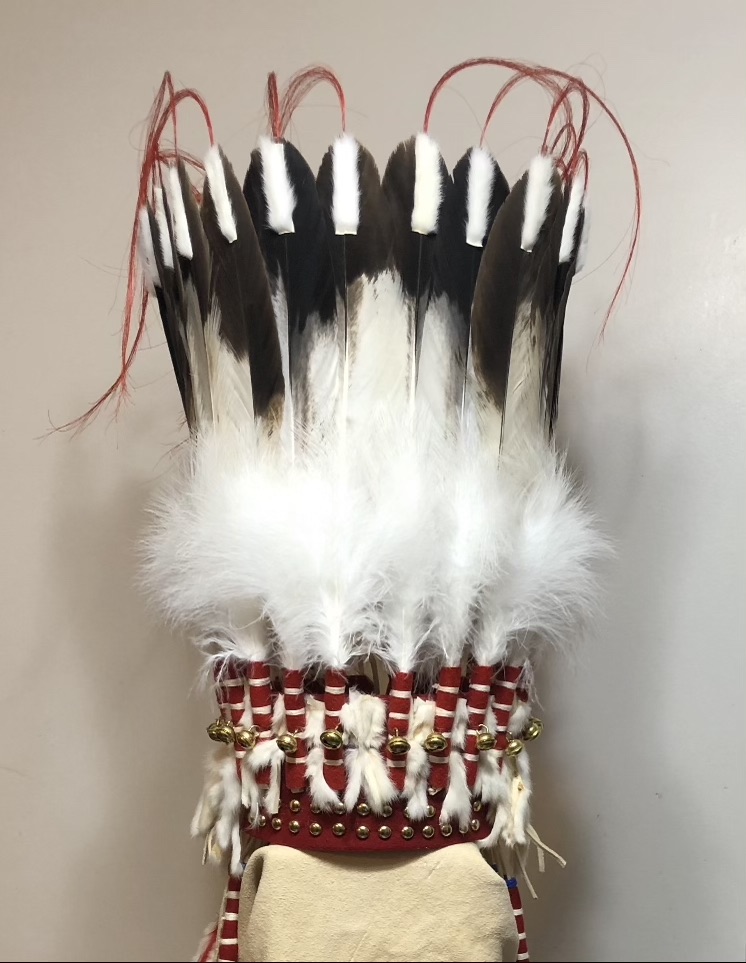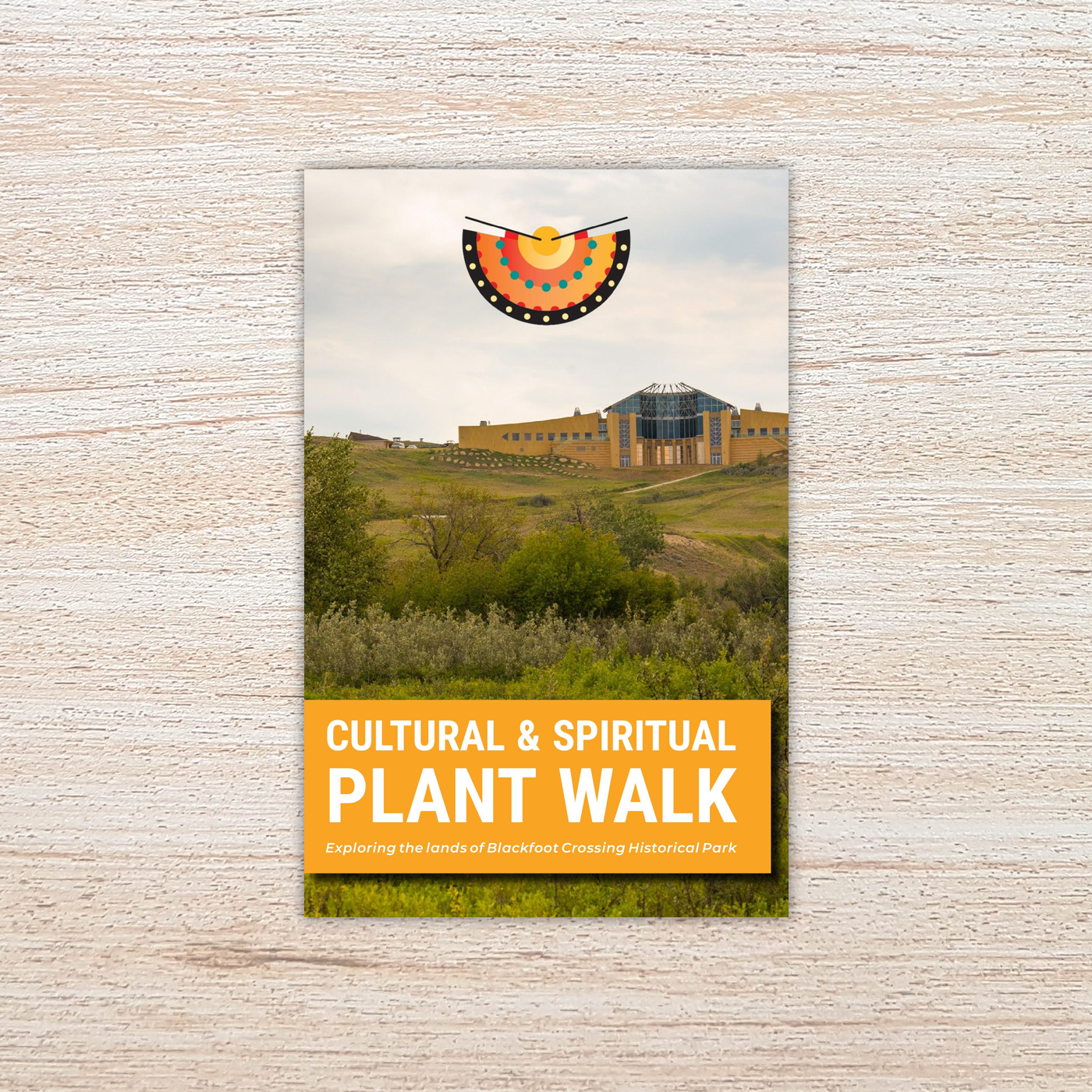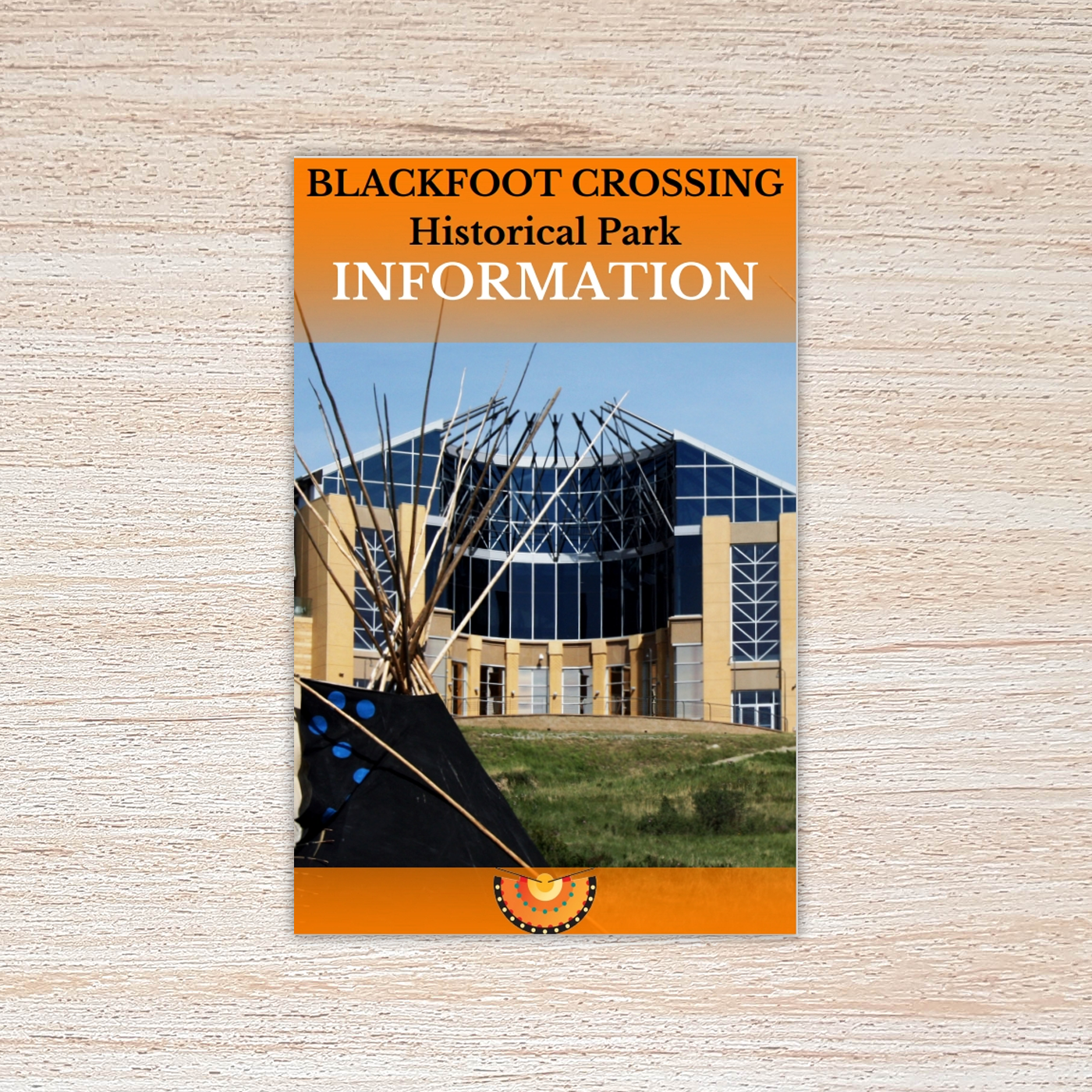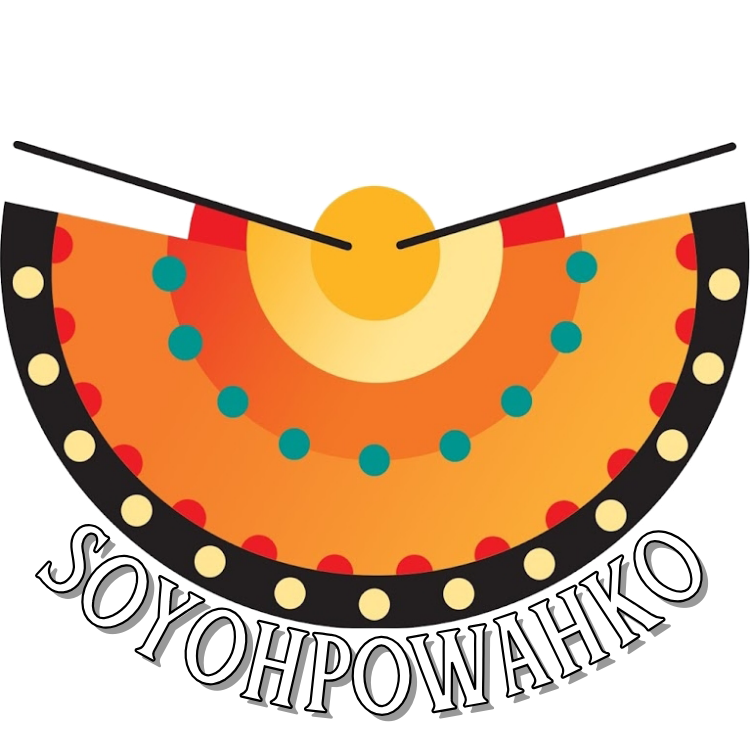Our Culture
The Siksika refer to themselves as Niitsitapi or “the Real People.” This is because they are equal partners in the universe with all the other Beings.

“What is life? It is the flash of a firefly in the night. It is the breath of a buffalo in the winter time. It is the little shadow which runs across the grass and loses itself in the sunset.”
Chief Crowfoot (1830 – 1890)



Long ago the Creator (Apisstotoki) made the earth and all the different things in it. He told the earth (Ksahkomitapi) that she would be the mother of all that he had created and that all his creation would live off her. The Sun (Natosi) was created and he was told that he would be the one to give light and warmth to everything. The Creator told Natosi’s wife, the Moon (Kokimmikisoom) that, along with all their children (Kakatosiiks) in the sky, they would be the ones to give light at night. After the Creator had finished everything, he called all his creations to name them and give them counsel. He told them that they must never forget their heritage and remember that they came from the Above People (Spomi’tapiiks). He told the animals that some of them would live below the earth, they would be called Stahtsitapiiks. He called those that would live in the water Soyitapiiks. However, when the Creator came to the dog, he was stumped as to what to do with him, so he was left to himself, and he freely romped all over the place. Somehow, he later ended up on the moon. Still today we often see his brothers, the wolf, the coyote and the other dogs, crying or howling for him to come home. This was how we all came to be in existence.
The Siksika refer to themselves as Niitsitapi or “the Real People.” This is because they are equal partners in the universe with all the other Beings. Many stories and legends have been passed down through generations about Creation and the early days.
In the old days, there were millions of buffalo (iini) on the plains. The buffalo provided food, clothing, shelter, tools, domestic items, weapons and ceremonial elements. Niitsitapi lived a nomadic lifestyle and followed the herds. Before the horse came, they hunted the buffalo on foot and also used buffalo jumps and pounds (temporary corrals). When they acquired horses, they were able to chase the buffalo and go further distances to hunt them. Niitsitapi has always had a respectful relationship with iini, and it is still an important part of spiritual life. For centuries aborigines of the plains utilized the meat and hides of the buffalo without making the slightest impression on their fabulous numbers. This was left for the white man to accomplish. The peak of the slaughter was reached sometime after the middle of the past century – a crescendo of such sadistic butchery of a big game animal as the world has ever known. Millions were wiped out in a few decades.
PIISTAAN – Buffalo Jumps
The buffalo (iini) jump was used for 5,500 years by our people to kill buffalo by driving them off the 10-metre-high cliff. The Blackfoot drove the buffalo from a grazing area in the Porcupine Hills about 3 kilometres west of the site to the “drive lanes,” lined by hundreds of cairns, then at full gallop over a cliff. The cliff itself is about 300 metres long and, at its highest point, drops 10 metres into the valley below. The site was in use at least 6,000 years ago, and the bone deposits are 10 metres deep. After falling off the cliff, the buffalo carcasses were processed at our nearby camp. This site is the most well-known buffalo jump- the UNESCO World Heritage Site, Head Smashed In Buffalo Jump in Southern Alberta. There are many others in traditional territory, including several at Siksika. South of High River is the Old Women’s Buffalo Jump. In 1952, a flash flood in the coulee below the jump exposed many layers of artifacts and bones. A dig at the site in 1958 revealed that the buffalo jump was in use for more than 1,500 years. The flat prairie, leading to a sudden cliff, the nearby creek, and the sheltered coulee provided perfect conditions for the buffalo kill site. Although many buffalo jumps have eroded over time, and many bones and artifacts have been removed, they are unique monuments to the historical importance of the buffalo.
What is a Buffalo Jump?
A buffalo (iini) jump is a cliff formation that North American Indians historically used to kill plains bison/buffalo by herding the buffalo and driving them over the cliff. Buffalo jumps came into prevalent use by Plains hunters around the first century A.D. Buffalo jump sites are often identified by rock cairns, which signified markers designating “drive lanes”, by which bison would be funnelled over the cliff. Often these drive lanes would stretch for miles on end. This type of hunting was most certainly a communal event, which probably lasted until around 500-600 A.D. when the bow and arrow made its way to the plains. Buffalo jump sites yield significant archaeological evidence because processing sites and camps are always nearby.
KA’KSIMI – Sage
Used for ceremonial cleansing. Sage is used in medicinal brews. Some brews can only be made and given by those who have the authority to make them.
PA’KIP – Choke Cherry
Crushed, dried and made into little cakes or mixed with dried meat and fat to make pemmican. Also used for medicine, and the branches for tools, and backrests.
OOKONOOKI – Saskatoon Berry
Berry soup is served at ceremonies and for special occasions. Saskatoons are enjoyed fresh or dried and are mixed with meat and fat to make pemmican.
MA’AS – Wild Turnip
Eaten raw, but was traditionally cooked in boiling pits lined with grass and rocks. It is very important in oral tradition and for the Societies and ceremonies.
SIPAATTSIMAAN – Sweetgrass
Used for cleansing and ceremonies, with prayers and offerings. It can also be used for medicine and as a freshener. Sweetgrass is often used in native crafts.
KINNIKINIK – Bearberry
The leaves are dried, mixed with twist tobacco and smoked in pipes at sacred ceremonies. The berries and leaves may have been used for medicinal purposes.
Moki-maani Pemmican
Traditionally pemmican was prepared from the lean meat of large game animals such as buffalo, elk or deer. The meat was cut into thin slices and dried over a slow fire, or in the hot sun until it was hard and brittle. Then it was pounded into very small pieces, almost powder-like in consistency, using stones. The pounded meat was mixed with melted fat with a ratio of approximately 50% pounded meat and 50% melted fat. In some cases, dried fruits such as Saskatoon berries, cranberries, blueberries, or choke cherries were pounded into powder and then added to the meat/fat mixture. The resulting mixture was then packed into “green” rawhide pouches for storage.
Buffalo Meat Preparation
An average male buffalo provided about 700 kilograms of meat. The fresh meat was either roasted on a stick over a fire or in a boiling pit. By stuffing meat and herbs into the buffalo’s gut we make sausage. Sometimes we take the meat that can’t be eaten right away and make jerky. Jerky was prepared by cutting the meat into fine strips and then hung over an open fire or on a rack out in the sun. To dry out. No part of the buffalo was ever wasted.
Bannock
Bannock was adopted into our cuisine over the 18th and 19th centuries, most likely from the fur traders. As it was easy to make on the trail and neatly complemented high protein trail foods like pemmican. As a result, even today, many First Nations people routinely prepare this dish. First Nations bannock is generally prepared with white or whole wheat flour, baking powder and water, which are combined and kneaded (possibly with spices, dried fruits or other flavouring agents added) and then fried in rendered fat, vegetable oil, or shortening. Visitors can try Bannock in our restaurant.
Boiling Pit
This was a means of cooking by which a round hole was scooped in the earth into which was sunk a piece of rawhide. The hole was then filled with water and meat placed in it, sometimes with vegetables in a skin bag to make a rich soup. A fire was then lit nearby, and a number of stones made red hot. When the stones were hot enough, they were either dropped into or held in the water, which would be raised to the boiling point to cook the meat.
Moving a Tipi
Travois: A system of transportation made from two or more long poles tied together to make an A-shaped frame with a carrying basket in the middle, similar to a sled. This significantly improved the method of transporting tipis and other personal items from place to place. Dogs were used as draft animals to pull the travois before the introduction of the horse in the 1700s.
Tipi Designs
Tipis designs are not merely decorative. The Blackfoot believed that spirit beings gave these images to people in their dreams so that harmony and long life would come to those inside. The designs connect us with the Spirit Beings in the world around us. These painted tipis are another of our Sacred Bundles. The right to paint a design is a privilege and was transferred from one person to another in a formal, public ritual. Not all of our tipis are painted. What to paint on the tipi was given to us by Papai-tapiksi, the Dream Beings. Each painted tipi has a ceremony for a specific purpose. The tipi is also painted in sections: The painted area around the bottom of the tipi cover is referred to as the Bottom Skirt. Bottom skirt designs utilized motifs that symbolized the earth’s surface. This paid spiritual tribute to the importance of Mother Earth as the source of all physical life. Conversely, the painted tops of tipis represented the upper limit of the physical world and therefore symbolized Father Sky. All human events were contained between these two boundaries – Mother Earth below and Father Sky above. Thus the events of humans, animals, birds, etc. were depicted around the sides or middle of the tipi between these upper and lower boundaries.
SAAMI – Headdresses
Straight-up Headdress The Straight-up Headdress is originally Blackfoot and is worn by both men and women. The headdress is fashioned with eagle feathers standing straight up. Winter weasel pelts are attached to the headband and in some headdresses, a red plume is attached to the front. Among the Siksika, the Straight-up Headdress can still be seen in the Sacred Horn Society as well as the Motokik Society. Antelope Horn Headdress Some Headdresses were fashioned for personal use by warriors. This particular headdress has two antelope horns on a hat that is made from the hide of a buffalo with a single eagle feather decorated with porcupine quill work. Several horses and material goods were used as payment to own such headdresses.
Split Horn Headdress
The Split Horn Headdress was made by splitting one buffalo horn in two, attaching the horns to the side of a felt hat, and covering it with winter weasel pelts some of which dangle around the hat. The Split Horn Headdress was worn by certain members of the Warrior Societies and still can be seen in some societies. One Horn Headdress This particular headdress was ritually transferred to the person who owned a tipi design that depicts a male and female serpent undulating around the bottom of the tipi. A single buffalo horn is attached to the front of a felt hat. The hat is then covered with strips of winter weasel pelts.
NIIT-TSI-TSI-KIIN – Moccasins
Early moccasins had soft soles and were made in one piece, folded with a side seam. This type of moccasin was known as “niit-tsi-tsi-kiin” (the true moccasin), a term that was shared among the three Blackfoot Clans.
Moccasins – beaded: Today all moccasins are referred to in this way. The two-piece moccasin with stiff rawhide soles and soft uppers probably came into being with the advent of the horse, when nomadic people began to move in greater distances over the Prairies. Men, women, and children all wore the same style of moccasin; only the size differed. Moccasins were fashioned with tanned buffalo, elk, moose, and deer hides. Later, domestic cowhides were used; a sign of hardship among Native people that meant wild game was scarce. Hides were either white or smoked, depending on their purpose. Everyday moccasins were left plain while decorated ones were used for special occasions. Porcupine quills and glass beads were commonly used. Moccasin decorations often provide spiritual protection in the form of certain symbols, which remind the wearer of sacred places, beings or teachings. These symbols face the wearer rather than the viewer. The bottoms of moccasins were also decorated for ceremonies. Blackfoot men were known to wear moccasins with beaded soles to pipe and bundle ceremonies. People sitting across from them could admire the beaded soles. Moccasins with fully beaded soles are often referred to as burial moccasins.
Clothing
The women’s principal garment was a sleeveless skin dress that fell to the ankles. The slip-like dress was supported by straps over the shoulders. In cold weather women wore separate skin sleeves and leggings to protect exposed flesh. Their dresses were decorated with porcupine quillwork and cut fringes. Elk and deer teeth adorned the dress and were also used for bracelets and necklaces. Colourful geometric designs painted with earth pigments decorated many women’s garments. The finest dresses, sleeves and leggings were made of antelope or mountain sheep skins. Elk and deer skins remained preferable for daily wear. As trade items began to reach the Blackfoot, changes took place in their style of dress. Women began to wear dresses with full elbow length sleeves, artfully embroidered with narrow bands of glass trade beads. Finger rings, pendants, metal bells, brass studs, and thimbles were used to decorate favourite dresses. This style remained with the Blackfoot until trade cloth gradually replaced tanned animal hides as daily clothing.
Daily wear for men included moccasins, elk or deerskin leggings, and a buffalo robe. For special occasions, men wore elk or deerskin shirts with cut skin fringes. These shirts were decorated with porcupine quill embroidery and trimmed with locks of their enemy’s hair. Some wore feathers in their hair and necklaces of Grizzly bear claws. As trade items began to reach the Blackfoot, men began wearing breechclouts and short sleeve shirts made from buckskin or trade cloth, usually undecorated. This style of dress included elaborate headdresses made from trade materials. This style remained with the Blackfoot until trade cloth gradually replaced tanned animal hides as daily clothing. The lighter skins of elk, deer, antelope, and mountain sheep were preferable for warm weather clothing, but in the winter, the buffalo’s heavy hide provided for cold weather wear. The buffalo hide, covered with thick shaggy hair, worn hair side in, made warm overcoats. Cut hides were fashioned into mittens, caps, and moccasins. This style of dress remained with the Blackfoot until trade cloth gradually replaced tanned hides as daily clothing.
PO’NO’KOMITA – Horses
Although there are ancient stories about horses, it is believed that they came from the south in the early 1700s. Those who first saw horses called them “elk dog” (po’no’komita) because they were the size of an elk and could move things like dogs. Life changed forever after horses came for our people. They were used for hunting and warfare, and could carry heavier loads farther and faster. Ownership of horses was a symbol of wealth and prosperity. Po’no’komita is still important in Siksika life for ceremonies and recreation. Pokaiks.
AI’PAWA’NIKSI – Animals
Niitsitapi had great respect for animals and believed that they had sacred powers that were given to them by the Creator. Many stories were told about animals that taught values and traditions. Animals provided more than just food, tools and clothing, they were a source of cleverness, wisdom and strength. Sometimes animal elements were worn for good luck and success. Although Niitsitapi preferred buffalo meat, they could still rely on other animals for food. They used antelope, deer and elk hides for dresses, suits and moccasins. Porcupine quills, animal teeth, bone, claws and tails were used for decoration. Headdresses and ornaments were made from feathers. Other parts of the animals were made into tools, utensils, containers and objects for everyday life. Animals have provided inspiration and the foundation for much of Siksika ceremonial and cultural life.
IMITAA – Dogs
Before the horse came, dogs. The dogs carried loads on their backs or were trained to draw a “travois”. The travois was formed by two long poles whose front tips converged for attachment to the dogs’ shoulders. Midway down the poles, a frame was attached that was either in ladder form or a heap with netting and thongs. To this, a 60 or more-pound load was attached. The travois was also used to carry firewood; relieving the woman of this job. Dogs were named according to their appearance or deeds done by their master, such as Red-spot, Feather-lance-carrier, and Took-away-his-shield. We also trained our dogs for bear baiting and flushing smaller animals out of hiding.
Stories & Information

Stories of the Siksika
Download our eBook and learn a bit more about the Blackfoot People.
Plant Walk Book
Download our Plant Walk Book and learn about the lands of Blackfoot Crossing Historical Park


Information Booklet
Explore our variety of programs, tailored to meet the interests and needs of every participant, with detailed descriptions of each program and pricing information provided for easy planning.











